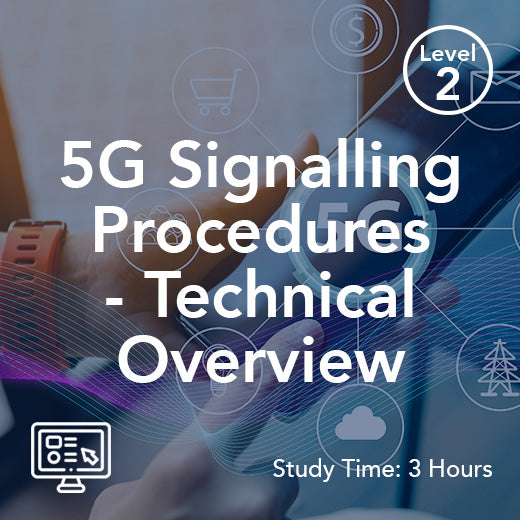Comprendere il livello del segnale di ricezione: una guida per principianti alle nozioni di base delle telecomunicazioni
- , di Stephanie Burrell
- 8 tempo di lettura minimo
Nel mondo interconnesso di oggi, comprendere le basi delle telecomunicazioni è più importante che mai. Un concetto fondamentale è il livello del segnale di ricezione, un fattore chiave nel determinare la qualità delle tue connessioni mobili e Internet. Questa misurazione indica la capacità di un dispositivo di acquisire i segnali inviati da una rete, influenzando direttamente la chiarezza delle chiamate e la velocità dei dati. Demistificando il livello del segnale di ricezione e comprendendo l'indicazione della potenza del segnale, miriamo a fornirti le conoscenze necessarie per prendere decisioni informate sulle tue esigenze tecnologiche. Unisciti a noi mentre approfondiamo gli elementi essenziali di questo componente cruciale delle telecomunicazioni, offrendo approfondimenti pratici per gli utenti di tutti i giorni.
Introduzione al livello del segnale di ricezione
Comprendere il livello del segnale ricevuto è essenziale per chiunque sia interessato alle telecomunicazioni. Questa sezione spiega cosa significano il livello del segnale di ricezione e il segnale di riferimento e perché sono vitali per il funzionamento dei servizi mobili e Internet. Il nostro obiettivo è fornire una comprensione fondamentale che aiuterà a comprendere concetti di telecomunicazioni più complessi in futuro.
Cos'è il livello del segnale di ricezione?
Il livello del segnale ricevuto è una misura del livello di potenza che un ricevitore riceve da un segnale trasmesso. In sostanza , l'indicazione della potenza del segnale ricevuto indica quanto bene un dispositivo può captare i segnali inviati da una rete.
Riconoscere il livello del segnale di ricezione è fondamentale perché influisce sull'efficacia con cui il dispositivo può connettersi a Internet o mantenere la qualità della chiamata. In termini più semplici, più forte è il livello del segnale spesso equivale a velocità dei dati più elevate e chiamate più chiare.
Dispositivi come telefoni cellulari e router visualizzano spesso barre di segnale, che rappresentano questa metrica. Queste barre sono una rappresentazione visiva della potenza del segnale e aiutano gli utenti a identificare la qualità della connessione.
Importanza nelle telecomunicazioni
L'importanza del livello del segnale ricevuto nelle telecomunicazioni non può essere sopravvalutata. In primo luogo , influisce sulla qualità e sul valore della comunicazione, influenzando tutto, dalle chiamate vocali alla velocità di trasmissione dei dati.
Un livello del segnale di ricezione più elevato significa una migliore chiarezza della chiamata e minori possibilità di interruzioni della connessione. Ciò è particolarmente cruciale in situazioni di emergenza, dove è necessario un segnale molto forte per una comunicazione affidabile.
I fornitori di telecomunicazioni utilizzano questa misura per ottimizzare le prestazioni della rete. Analizzando i livelli del segnale della rete wireless, possono identificare le aree con copertura debole e apportare le modifiche necessarie.
Misurazione del livello del segnale di ricezione
La misurazione accurata del livello del segnale di ricezione è essenziale per diagnosticare i problemi della rete e migliorare i servizi di telecomunicazione. Questa sezione esplora gli strumenti e le tecniche utilizzate per valutare la potenza del segnale e misurare in modo efficace i livelli del segnale di ricezione.
Strumenti e attrezzature
Per misurare accuratamente i livelli del segnale ricevuto, vengono utilizzati vari strumenti e apparecchiature. I dispositivi comuni , insieme a quelli che visualizzano i valori Rssi, includono analizzatori di spettro e misuratori di potenza del segnale.
Analizzatori di spettro : vengono utilizzati per esaminare lo spettro di frequenze dei segnali. Forniscono informazioni dettagliate sulla potenza e sulla qualità del segnale.
Misuratori della potenza del segnale : questi dispositivi portatili forniscono una lettura rapida dei livelli del segnale. Sono particolarmente utili per le misurazioni in movimento.
Per i professionisti, avere gli strumenti giusti è fondamentale per garantire misurazioni accurate e affidabili. Questi dispositivi Wi-Fi aiutano i tecnici a identificare i segnali deboli e a risolvere i problemi di rete in modo efficace.
Tecniche di misurazione comuni
Per misurare i livelli del segnale di ricezione vengono utilizzate diverse tecniche, ciascuna con i propri vantaggi. Comprendere i metodi dei canali è vitale per chiunque sia coinvolto nella manutenzione o nell'ottimizzazione della rete.
RSSI (indicatore della potenza del segnale ricevuto) : questa è una metrica comune utilizzata per valutare la potenza del segnale. Fornisce una rappresentazione numerica della potenza del segnale, che viene poi utilizzata per valutare la qualità della connessione.
Decibel (dBm) : le misurazioni in dBm offrono una valutazione più precisa della potenza del segnale. Questo metodo è ampiamente utilizzato per la sua precisione e affidabilità.
Misurazioni dell'intensità del campo : vengono condotte per valutare l'intensità dei segnali radio in una determinata area. Vengono spesso utilizzati per pianificare e ottimizzare la copertura di rete.
Fattori che influenzano i livelli del segnale
Diversi fattori possono influenzare i livelli del segnale di ricezione. Comprendere questi elementi, inclusa la velocità di Internet, è vitale per migliorare la ricezione del segnale e garantire prestazioni di rete affidabili. Questa sezione approfondisce i fattori ambientali e tecnologici che influiscono sui livelli del segnale.
Influenze ambientali
Le condizioni ambientali svolgono un ruolo significativo nell'influenzare i livelli del segnale di ricezione. Fattori come edifici, condizioni meteorologiche, terreno e utilizzo di un'antenna direzionale possono influire sulla potenza del segnale.
Edifici e strutture : materiali densi come cemento e metallo possono bloccare i segnali, riducendone la forza. Questo è il motivo per cui la ricezione all'interno è spesso più debole di quella all'aperto.
Condizioni meteorologiche : pioggia, neve e nebbia possono assorbire o diffondere le onde radio, portando a livelli di segnale più bassi.
Terreno : colline e valli possono ostacolare i segnali, creando zone morte dove la ricezione è debole o inesistente.
Comprendere queste influenze, in particolare la qualità del segnale di riferimento ricevuto, aiuta a progettare reti che riducano al minimo la perdita di segnale.
Limitazioni tecnologiche
Anche i vincoli tecnologici possono influenzare i livelli del segnale di ricezione. Limitazioni nelle apparecchiature e nell'infrastruttura di rete possono portare a una ricezione del segnale non ottimale misurata in decibel relativi.
Sensibilità del dispositivo : i dispositivi più vecchi potrebbero non avere la sensibilità necessaria per captare segnali più deboli, con conseguente ricezione peggiore rispetto ai modelli più recenti.
Congestione della rete : un traffico elevato su una rete può portare a una ridotta qualità del segnale, poiché più utenti competono per la larghezza di banda.
Interferenze : altri dispositivi elettronici possono causare interferenze, interrompendo la trasmissione e la ricezione del segnale.
Riconoscere questi fattori, in particolare quelli che incidono sulle connessioni wireless, aiuta a risolvere i problemi e a migliorare i sistemi di rete.
Miglioramento della ricezione del segnale
Il miglioramento dei livelli del segnale di ricezione implica sia soluzioni pratiche che approcci tecnologici avanzati. Questa sezione fornisce approfondimenti sui metodi per migliorare la ricezione del segnale e garantire una comunicazione affidabile.
Soluzioni pratiche
Spesso è possibile migliorare la ricezione del segnale attraverso soluzioni semplici. Ecco alcuni passaggi pratici che possono migliorare la capacità del tuo dispositivo di ricevere segnali, ad esempio:
Riposiziona il dispositivo : avvicinarsi a una finestra o a un terreno più elevato può migliorare la potenza del segnale.
Rimuovere gli ostacoli : rimuovere ostacoli come mobili o grandi elettrodomestici può aiutare ad aumentare i livelli del segnale.
Utilizza amplificatori di segnale : questi dispositivi amplificano i segnali deboli, migliorando la ricezione nelle aree con scarsa copertura.
L'implementazione di queste azioni può fare una notevole differenza nella qualità del segnale del tuo dispositivo.
Approcci tecnologici avanzati
Per miglioramenti più significativi potrebbero essere necessarie soluzioni tecnologiche avanzate. Questi approcci spesso comportano l'aggiornamento delle infrastrutture o dei dispositivi per migliorare i livelli di ricezione del segnale.
Tecnologia MIMO : la tecnologia Multiple Input, Multiple Output utilizza più antenne per migliorare la ricezione del segnale. È sempre più comune nei router e nei dispositivi mobili moderni.
Aggiornamenti della rete : i fornitori di telecomunicazioni possono migliorare la qualità del segnale aggiornando le apparecchiature di rete ed espandendo le aree di copertura.
Antenne intelligenti : regolano in modo adattivo la loro direzione per ottimizzare la ricezione del segnale, offrendo una connessione più affidabile.
Investire in queste tecnologie può portare a miglioramenti sostanziali nella ricezione del segnale e nella qualità complessiva della comunicazione.
Tendenze future nella tecnologia dei segnali
Il futuro della tecnologia a livello di segnale di ricezione è promettente, con innovazioni pronte a migliorare la qualità della comunicazione. Questa sezione esplora le tendenze future e il loro potenziale impatto sulla comunicazione quotidiana.
Innovazioni all'orizzonte
Le tecnologie emergenti sono destinate a rivoluzionare i livelli del segnale di ricezione, offrendo connettività e prestazioni migliorate. Le principali innovazioni includono:
Reti 5G : offrendo velocità più elevate e latenza inferiore, il 5G promette di migliorare la ricezione del segnale e la trasmissione dei dati.
Ottimizzazione della rete basata sull'intelligenza artificiale : l'intelligenza artificiale può aiutare a ottimizzare le reti analizzando i dati e apportando modifiche in tempo reale per migliorare la qualità del segnale.
Internet via satellite : con le aziende che investono in servizi Internet basati su satellite, i livelli di ricezione del segnale nelle aree remote potrebbero registrare miglioramenti significativi.
Si prevede che questi progressi trasformeranno il modo in cui ci connettiamo e comunichiamo.
Impatto sulla comunicazione quotidiana
L’impatto di queste innovazioni sulla comunicazione quotidiana sarà profondo. Livelli di segnale di ricezione migliorati miglioreranno sia le interazioni personali che professionali.
Migliore qualità delle chiamate : con segnali più forti, gli utenti possono aspettarsi chiamate vocali più chiare e meno interruzioni delle connessioni.
Velocità dati più elevate : livelli di segnale migliorati consentiranno download più rapidi ed esperienze di streaming più fluide.
Maggiore accessibilità : le aree remote e scarsamente servite avranno un migliore accesso a servizi Internet e mobili affidabili.
Man mano che queste tendenze si sviluppano, compresi i progressi nella rssi, ridefiniranno il panorama delle telecomunicazioni, rendendo la comunicazione più efficiente e accessibile a tutti.
UN

































